|

 |
|
 |

|
What is Marine Debris? |
|
| |
Marine Debris is any trash that ends up in the ocean. |
|
| |
Marine debris is any human-made trash that is thrown out and discarded in the ocean.
Even though debris is produced in one country, they can arrive to many other countries traveling across the ocean. Every year, it is estimated that over a billion pounds of debris are thrown into the ocean.
Typical types of marine debris are plastics, glass, cloth, derelict fishing gear, metals, rubber, and vessels. These greatly pollute the ocean and threaten the life of many marine communities.
Debris that is washed to shore also takes away the beauty from beaches and damage habitat on land.
|
| |
 |
| |

|
What kind of trash become Marine Debris? |
| |
All the trash that doesn't belong to the ocean becomes Marine Debris.
Some Marine Debris, like food waste or paper, are able to degrade (break down chemically) and disappear within a short period of time.
Other debris, like glass bottles, tin cans, and fishing lines, take a very long time to break down and can take several hundred years to degrade.
Many plastic debris that are created using human-engineered materials like nylon, polyethylene, and polypropylene, take an especially long time and may not even degrade completely.
Without being able to degrade, they may stay in the ocean forever, unless they are removed by people or marine animals. |
| |
| |
 |
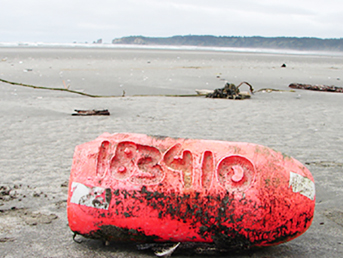 |
| toothbrush |
buoy |
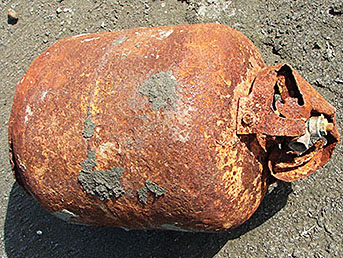 |
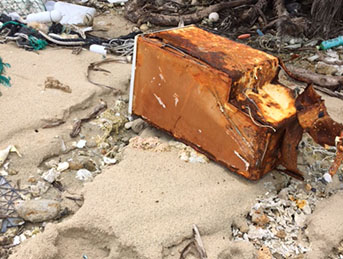 |
| propane gas tank |
refrigerator |
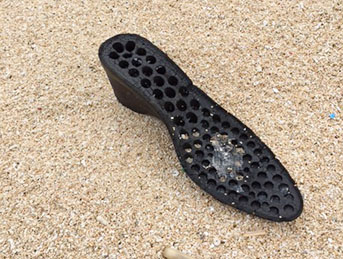 |
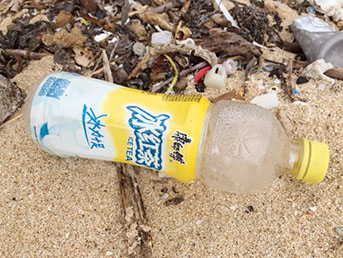 |
| plastic shoe sole |
plastic bottle |
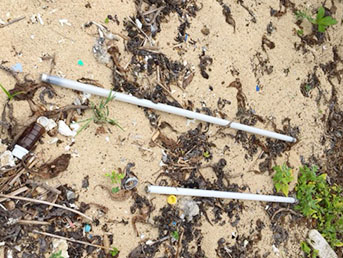 |
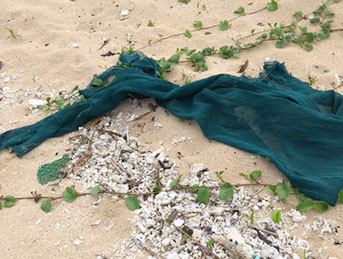 |
| fluorescent light |
fishing net |
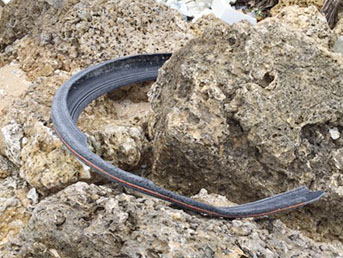 |
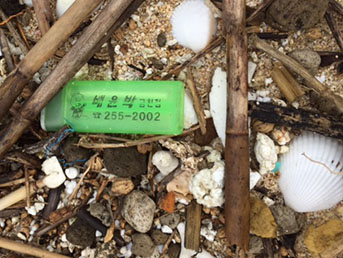 |
| bycicle tire |
lighter |
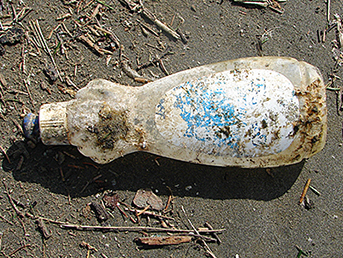 |
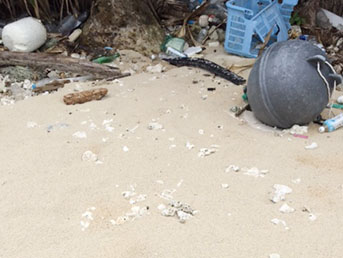 |
| detergent bottle |
buoy & plastic containers |
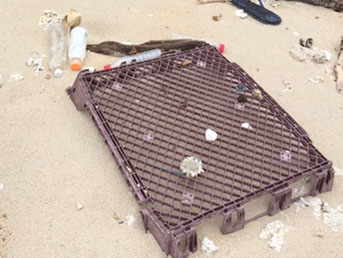 |
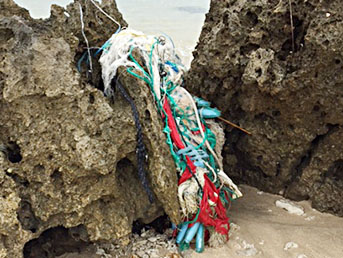 |
| plastic pallet |
net & ropes |
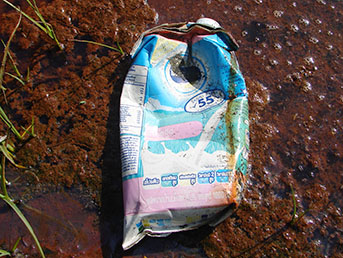 |
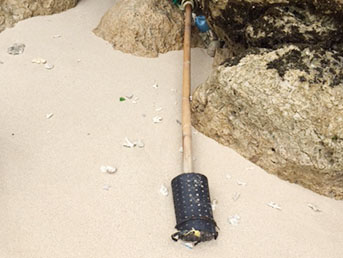 |
| paper container |
torch |
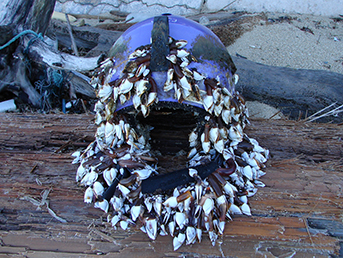 |
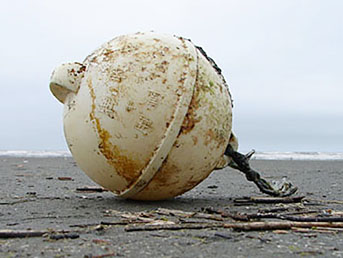 |
| helmet |
buoy |
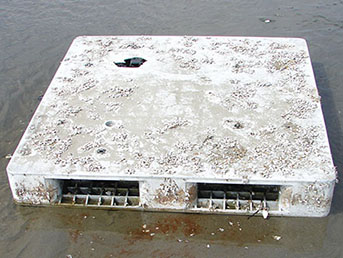 |
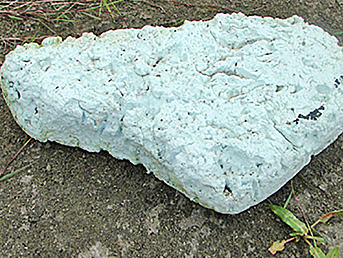 |
| plastic pallet |
styrofoam |
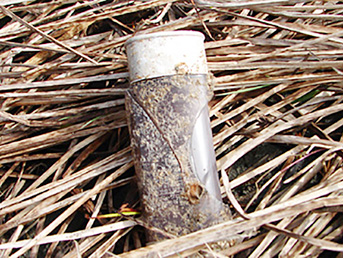 |
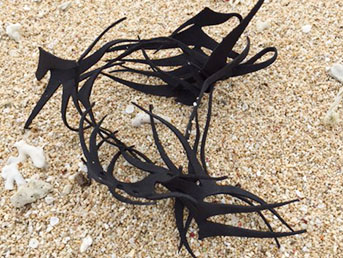 |
| cosmetic container |
rubber material |
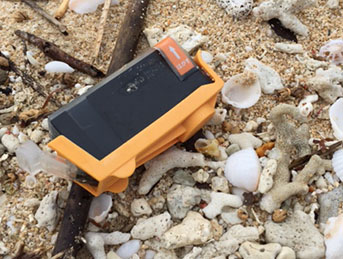 |
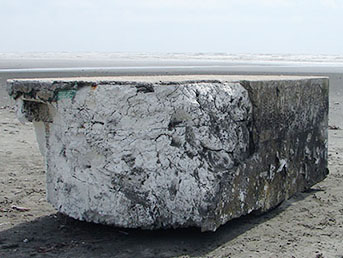 |
| ink cartridge |
styrofoam |
| |
|
|
 |
|
|
 |
Correlation between the Type of Plastic and Existing Depth in the Ocean Correlation |
| |
Only a part of plastic marine debris are visible and floating on the surface of the ocean, while more plastic debris are in the deep sea. |
| |
A. Specific gravity: |
| |
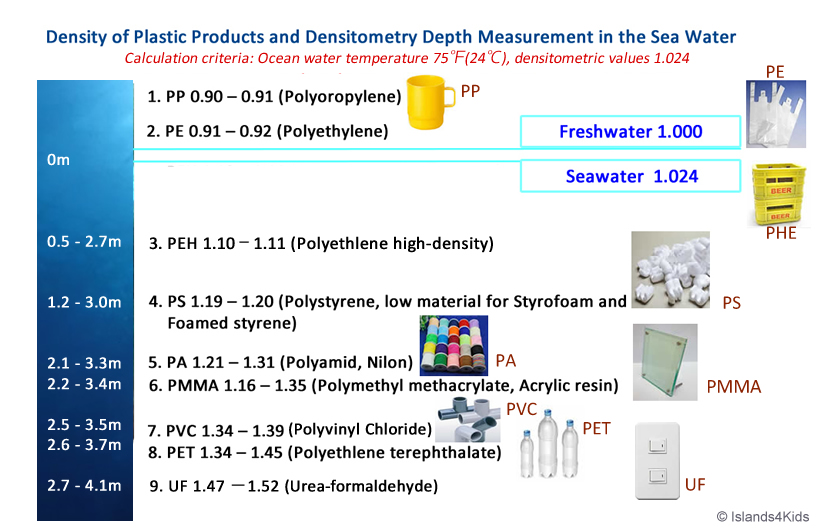 |
| |
|
| |
B. Filler: |
| |
|
Every plastic product is not made of a single material, but of many other compound additives called “filler” to increase usability or improve design flexibility. If the ratio of filler changes, the value of specific gravity changes as well. The depth distribution is always closely interconnected with the specific gravity of each plastic product. |
| |
|
| |
C. Accumulation of micro-organisms: |
| |
|
Algae diatoms, plants, and larval settled on surfaces of plastic marine debris increase the weight of debris and directly changes the existing depth. |
| |
|
| |
D. Salinity: |
| |
|
Change of salinity concentration also influences the existing depth of plastic marine debris. |
| |
|
| |
E. Plastic marine debris exists at any depth of the ocean: |
| |
|
They are found at almost any depth, from the ocean surface to the bottom of the 10,000 meter (6 miles) deep sea bed. |
| |
|
|